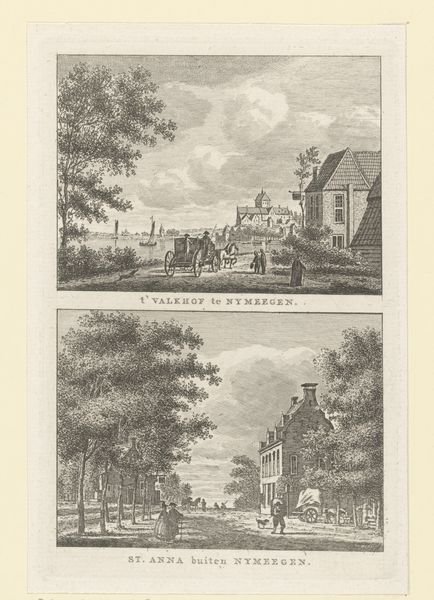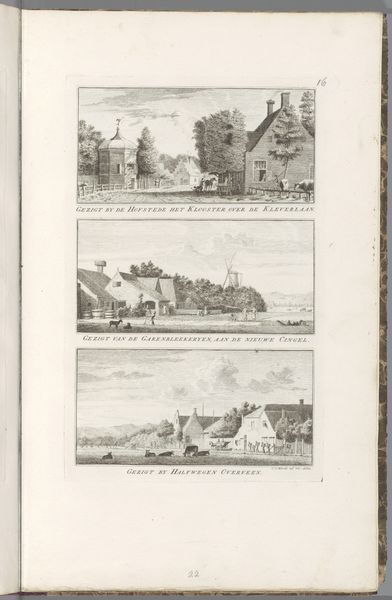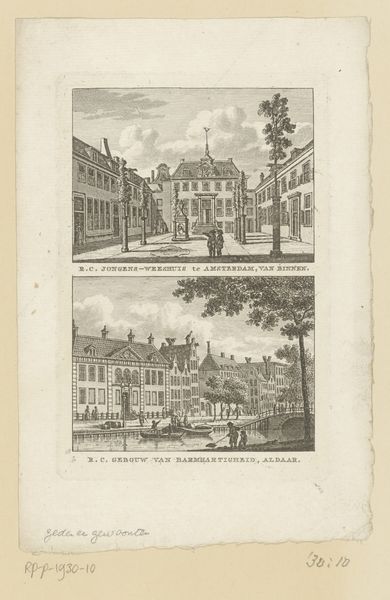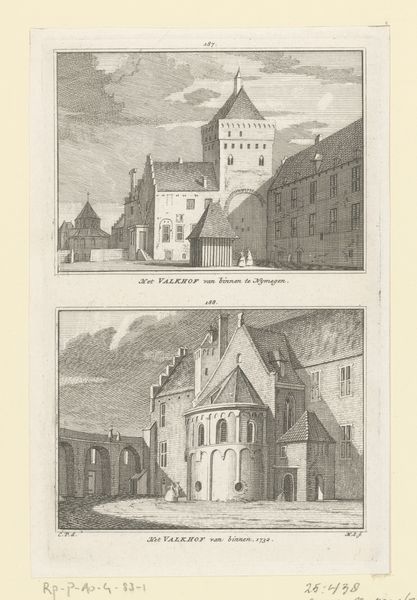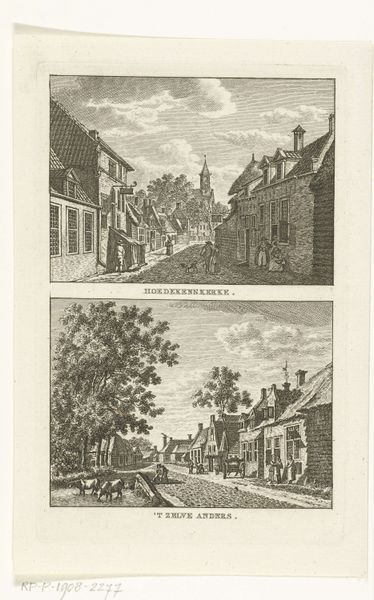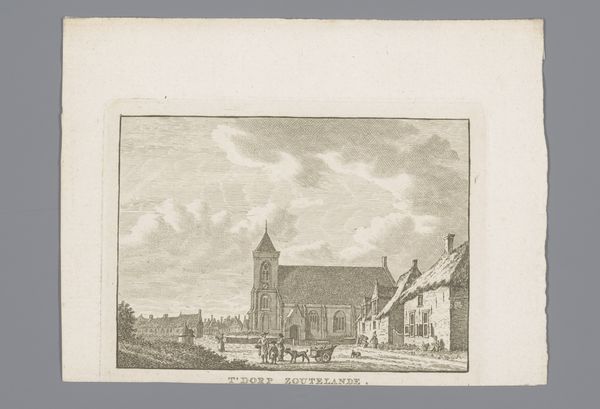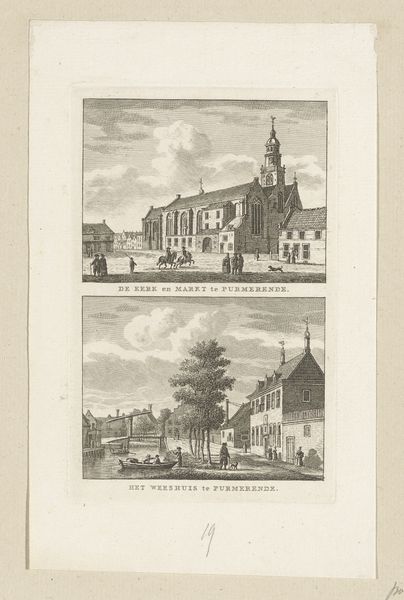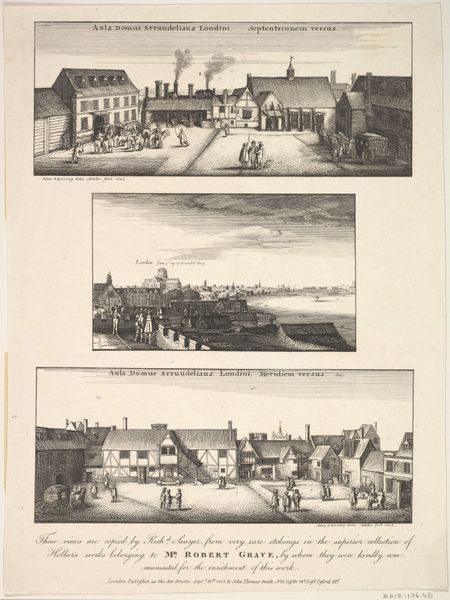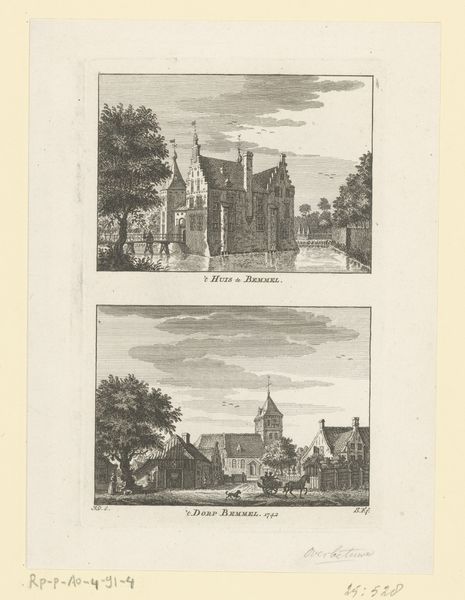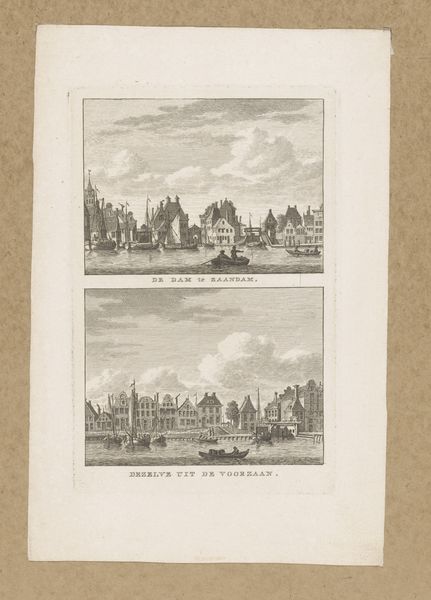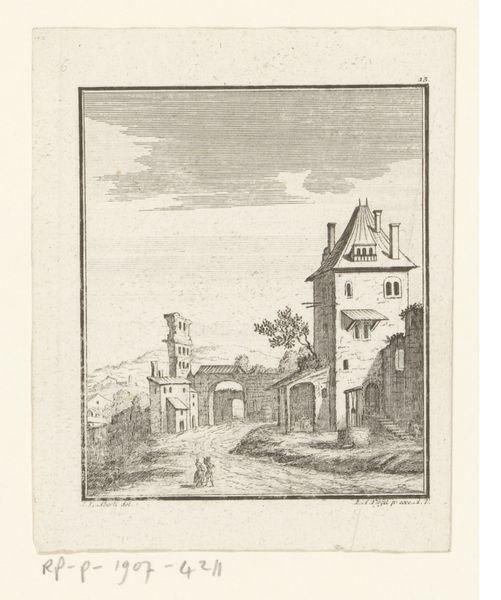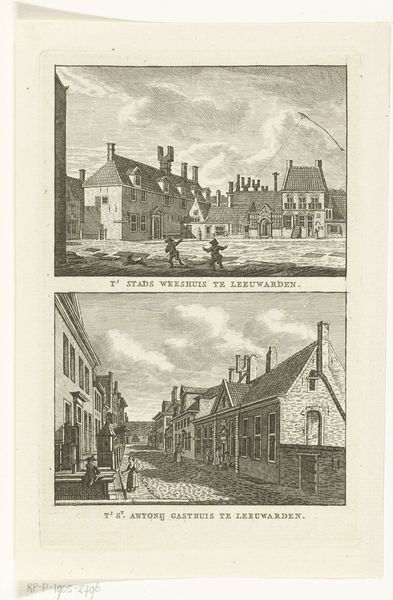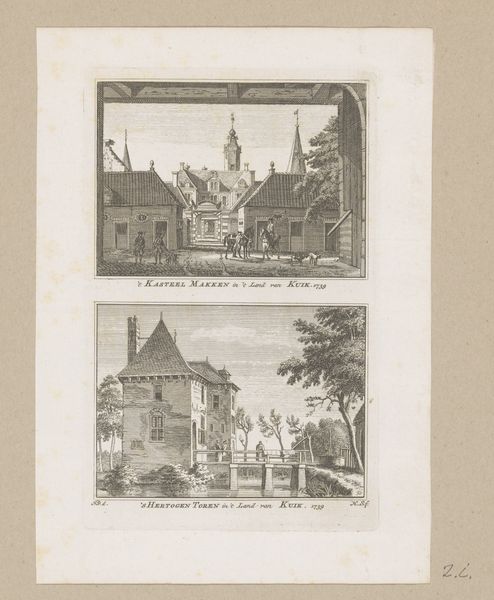
drawing, print, engraving
#
drawing
#
neoclacissism
# print
#
landscape
#
cityscape
#
genre-painting
#
engraving
#
realism
Dimensions: height 170 mm, width 114 mm
Copyright: Rijks Museum: Open Domain
Editor: This is "Twee dorpsgezichten op Zoutelande in Zeeland" by Carel Frederik (I) Bendorp, made between 1786 and 1792. It’s an engraving showing two views of the same town. What I find fascinating is how everyday life is depicted with such attention to detail; it really feels like stepping back in time. What strikes you most about this piece? Curator: I am most interested in the socio-economic realities embedded within the lines of this print. Look at the houses, their construction materials. What can these structures tell us about the labor and resources available to the inhabitants? Are there signs of trade or specific industries within the compositions themselves? Editor: That’s an interesting way to look at it. I was mostly drawn to the artistic elements – the perspective and the way the light is captured, for example. The texture seems important, too, the cobbled street in the lower half. But thinking about the actual houses… Curator: Exactly! These aren’t just aesthetic choices. Consider the availability and cost of brick versus thatch, the placement of windows reflecting taxation based on sunlight, and how such structures shaped social interactions, the accessibility and community activity in each town. Editor: So, it's like reading the buildings as a form of historical record. I suppose I usually consider prints like this for their artistic merit or historical documentation, but thinking about the materials and labor that went into even the town itself really reframes my understanding. Curator: Precisely. And by recognizing the art-making processes, such as engraving, a method for reproduction to facilitate greater understanding, what can we say about Neoclassical period's commitment to disseminating ideals among specific and new markets? Editor: I now see so many layers of historical and economic context I originally missed! Thanks, that gives me a whole new appreciation for prints beyond just their artistic value. Curator: Indeed. Remember to look beneath the surface. Art and material culture are invaluable sources of history when interrogated about the forces that shaped them.
Comments
No comments
Be the first to comment and join the conversation on the ultimate creative platform.
